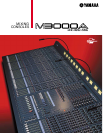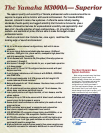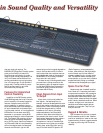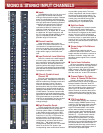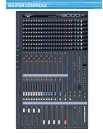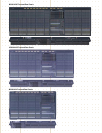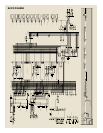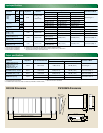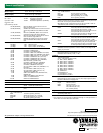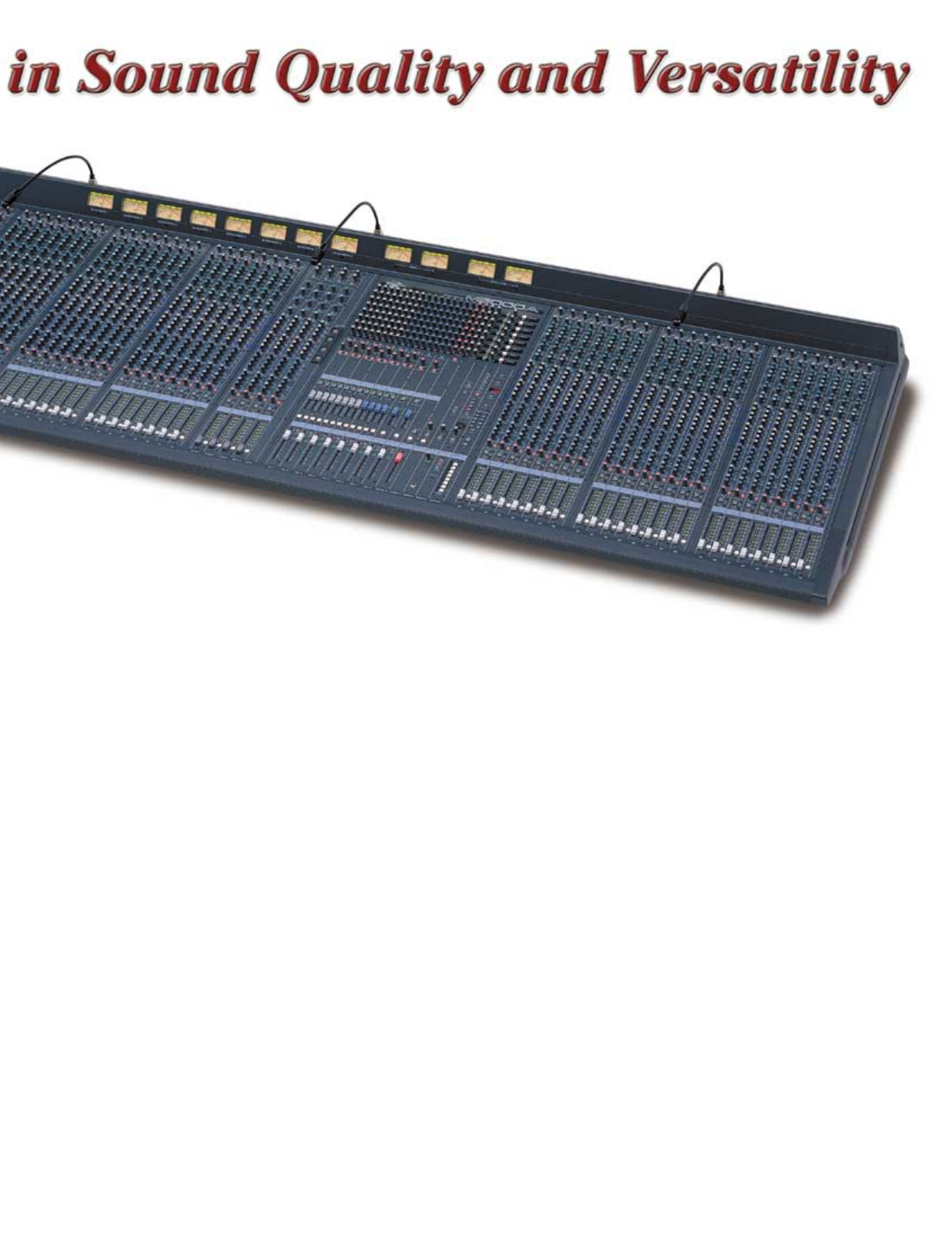
channel strips so that no signal degradation
occurs. And how about a 20 x 8 submix
matrix output that can provide as many as
eight independent mixes of the signals on
the M3000A’s 16 mix busses, the stereo
buss, and matrix sub inputs?
We have no way of knowing exactly what
you need from a mixing console, but we
have spared no effort or expense in ensur-
ing that the M3000A offers the versatility
you need to get any job done with maxi-
mum ease and efficiency.
Clean Signals From Input
To Output
Many mixer circuits must handle low-
level signals - the head amplifiers, for
example - and must be designed with extra
care or they can be a major source of noise
and distortion. Other critical design criteria
include inter-stage matching, internal
impedance, circuit layout, grounding,
component selection, and a veritable
plethora of other factors that affect per-
formance and the mixer’s overall “sound”.
Here’s where Yamaha technology makes a
real difference. Whether you’re using
microphone or line input, Yamaha’s high-
performance circuitry gives you an excep-
tionally clean, quiet signal from input to
output. But then there’s RF rejection. RF
(Radio Frequency) noise generated by
motors, video monitors, and digital equip-
ment of almost any kind can make the
cleanest, quietest circuitry virtually worth-
less. The M3000A boasts outstanding RF
noise rejection, so you can use it just about
anywhere without picking up unwanted
interference that can degrade your signal.
Specs You Can Trust
Yamaha never has “tweaked” specifica-
tions. Never will. It’s amazing how medio-
cre specs can be made to look impressive
by simply optimizing test conditions. The
electrical specifications we publish are all
brutally honest, measured under the stated
and/or industry-standard conditions. When
in doubt, we urge you to use the most
sensitive sound measurement devices
available: your own ears. They’ll tell you
who you can trust.
Rugged & Reliable
From connectors to controls to chassis,
the GA consoles are built to last. Whether
used in an installation or taken on the road,
these attractively-finished, rugged consoles
will keep on performing with the utmost
reliability.
than any single job requires. The
M3000A’s GA (Group/Aux) Diversity system
gives you the flexibility to match the
console’s buss configuration to a wide
range of signal-routing requirements. 8 of
its 16 mix busses can be switched from
auxiliary send status to group type opera-
tion in 2-buss groups, so you can have 2
groups and 14 auxiliary sends, 6 groups
and 10 auxiliary sends, or any other
combination the job requires.
Features For Unmatched
Control Flexibility
In addition to the GA Diversity system,
the M3000A expands the limits of console
control versatility with several innovative
features. A scene memory with MIDI-
control capability, for example, lets you
store and instantly recall mute settings for
all input channels and mix busses output
from the panel controls, or from an external
MIDI device. You can even use a MIDI
sequencer or a computer running MIDI
sequencing software for total mute automa-
tion. Then there’s VCA grouping: all input
channels can be individually assigned to
any of 8 VCA groups, then the correspond-
ing VCA master fader will simultaneously
control the relative levels of all assigned
channels via VCAs built right into the



